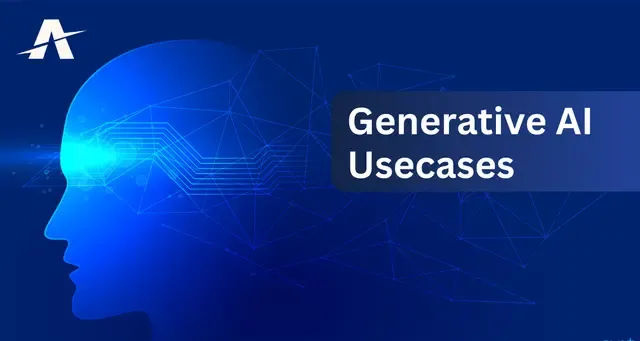
The efficient flow of products and services from suppliers to consumers in a global economy depends on the underlying supply chain. Modern supply chains are intricate, and the dynamics between supply and demand are volatile, hence firms that diversify and grow more integrated and sophisticated find it difficult to maximize their business strategies. With its innovative solutions that are improving output, lowering costs, and supporting data-driven decisions, AI is quickly becoming a popular tool among firms looking to optimize their supply chains.
What is supply chain optimization?
The aim of supply chain optimization is to lower costs and increase efficiency by carefully managing a variety of activities, like production, distribution, logistics, and procurement. In the past, this was accomplished by manual procedures and heuristic algorithms, which, because of their limited computational capacity and data processing skills, frequently produced subpar or irrelevant results. However, companies may today achieve unprecedented levels of efficiency and responsiveness in their supply chain operations by deploying tools such as machine learning, predictive analytics, and optimization algorithms.
How can supply chain optimization help organizations:
Lets understand this with the example of Zara, a leading global apparel retailer Through its fast-fashion model, Zara integrates design, production, and distribution processes efficiently, minimizing inventory and responding swiftly to consumer trends. This approach enables Zara to maintain competitiveness in the fashion market, reduce markdowns, and enhance profitability. By streamlining operations and reducing the time from manufacturing to market, companies like Zara demonstrate the significant business advantages of supply chain optimization in today's evolving marketplace.
Where does AI come into the picture?
AI offers a wide range of capabilities that can revolutionize supply chain management:
Demand Forecasting:
Demand forecasting models built using AI algorithms can analyze historical data, market trends, and external factors to predict future demand with greater accuracy. By providing actionable insights into demand patterns and fluctuations, AI helps businesses optimize inventory levels, reduce stockouts, and minimize excess inventory costs.
Inventory Management:
AI algorithms optimize inventory levels by dynamically adjusting reorder points, safety stock levels, and lead times based on real-time demand signals and supply chain constraints. By optimizing inventory management, businesses can reduce carrying costs, improve product availability, and enhance customer satisfaction.
Route Optimization:
AI-powered route optimization algorithms optimize transportation routes, vehicle scheduling, and delivery routes to minimize fuel consumption, reduce transportation costs, and optimize delivery times. By leveraging real-time data on traffic conditions, weather forecasts, and delivery constraints, AI helps businesses streamline their logistics operations and improve overall efficiency.
Supplier Management:
AI-powered supplier management systems analyze supplier performance, assess risk factors, and identify opportunities for collaboration and improvement. By automating supplier evaluation processes and monitoring supplier performance in real-time, AI helps businesses mitigate supply chain disruptions, identify cost-saving opportunities, and build more resilient supply chains.
Real-World use cases of AI in Supply Chain Optimization:
Several industries are already using the latest AI technology to optimize their supply chain operations:
Retail:
Anticipating client preferences and maintaining a sufficient inventory level is a major hurdle for retailers. Walmart is able anticipate product demand by utilizing intelligent algorithms to examine historical sales, industry trends, and even weather forecasts. This aids in keeping shelves full and keeps popular goods from running out. Amazon also uses similar technology to predict what things consumers will likely purchase and make sure the appropriate items are in stock for prompt delivery. In this way, both companies are able to improve their consumers' purchasing experiences by utilizing these information.
Manufacturing:
Maintaining well-functioning machinery can ensure efficiency during the manufacturing process. Smart, AI-powered systems are used by companies such as Siemens and General Electric (GE) to anticipate when their machines may break down and repair them before they cause severe problems. For instance, Siemens tracks industrial machinery in real-time to prevent breakdowns, while GE analyzes data from aviation engines to identify any difficulties early. These businesses secure the safety and dependability of their goods, reduce the cost of repairs, and maintain efficient manufacturing processes by utilizing this predictive technology.
Logistics:
Logistics firms, like UPS and FedEx, employ AI-powered systems to analyze several factors, like traffic conditions and delivery timelines, to identify the most efficient routes for package delivery. UPS is able to modify delivery routes based on real-time data to conserve fuel and cut emissions while FedEx uses similar technology to guarantee items are delivered promptly and efficiently. By using these advanced systems, these companies can improve services, reduce costs, and keep their customers happy.
Final Note:
Any business hoping to acquire an upper hand in the present quickly developing commercial center can utilize simulated intelligence to mechanize routine undertakings, improve stock administration, smooth out coordinated factors tasks, and upgrade provider connections. This can likewise assist firms with breaking down the tremendous measures of information produced by present day financial exercises and fortify their dynamic interaction by integrating new and frequently covered up experiences which are uncovered because of investigation on this information by strong artificial intelligence controlled frameworks.
As these advancements proceed to develop and develop, the fate of inventory network improvement holds massive commitment for organizations trying to remain on the ball and open new open doors for development and advancement. With such an integral asset in their weapons store, they can explore the intricacies of current stockpile chains with certainty, spryness, and flexibility, driving practical progress in a steadily impacting world.












